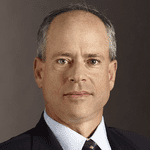
Winds of Change: Hurricane Sandy Is Ushering in a Smarter Power System
Written with Dan Kammen, a Clean Coalition Board member and Distinguished Professor of Energy at the University of California, Berkeley where he directs the Renewable and Appropriate Energy Laboratory.
It’s ironic that a storm whose widespread blackouts left millions of Americans in the dark is finally helping us see the light.
Hurricane Sandy brought devastation and loss to the Eastern seaboard. The storm exposed the severe vulnerability of our electricity infrastructure and made global headlines as a harbinger of nature’s impacts in a climate changed world.
Beyond the shock, New Yorkers found a silver lining in the destruction. The storm made crystal clear that the existing electricity system is not suited to address the challenges of the 21stcentury. In response, New York State recently released a powerful report illuminating how it plans to create a more affordable, efficient and more reliable grid.
TitledReforming the Energy Vision, this game-changing documentcalls for a new approach to generating, managing, and delivering electricity throughout New York. The state proposes to replace aging infrastructure by investing nearly $30 billion over the next decade to develop a smarter electricity system. State officials, seeing the performance and cost benefits, are moving quickly to put this vision into action.
Central to the new strategy is replacing two obsolete paradigms: that the model of centralized generation combined with long-distance transmission is the most cost-effective option, and that utility customers should only consume – not produce – grid services.
When it comes to the electricity system, Sandy helped to make clear that bigger isn’t always better. To expand grid services, we have historically incentivized utilities to build large power plants and big transmission infrastructure. This has led to an inefficient and overly expensive electricity system.
States across the country have built significantly bigger systems than necessary. For example, New York’s electricity system uses just 60 percent of the electricity it is capable of generating, on average, because many power plants operate only a small number of hours each year when demand for electricity is highest. Additionally, roughly 10 percent of transmission-dependent power is lost because of inefficiencies associated with power traveling long distances. New Yorkers, as a result, pay more for electricity than they should.
Now, smart information systems, energy efficiency, and local renewables are challenging this centralized paradigm in terms of performance and costs. These distributed energy resources can provide resilient, affordable electricity services driven by private investment and innovation. Universities areoften ideal demonstration sitesfor these new power systems: The 38 megawatt Cornell University microgrid and the 12 megawatt facility for New York University are both examples that are performing well and changing perceptions of the historical divide between producer and consumer of energy.
To unleash distributed energy resources in New York, officials are redefining the relationship between utilities, their customers, and the power grid. Rather than simply providing energy as a commodity, New York now sees its utilities as businesses that can be incentivized to provide electricity as a service. Moving forward utilities will manage the grid as a platform where innovative businesses compete to provide grid services. The result can be drastically improved performance of the electricity system and reduced costs for everyone.
New York is on the right track and leading the nation towards a clean, efficient and reliable electricity system. Yet, even more should be done. Smart, ‘two-way’ meters in every home allow effective demand management, while competitive rates of payment toalllicensed grid service providers can drive competition and innovation, which benefits consumers.
Greater support for distributed generation will power economic growth – producing more jobs per dollar invested than traditional power plants. And deployment of local renewables can be accomplished at remarkable speed enabling a transition to a zero-carbon electricity system in as little as two decades, according to our studies.
Nationally, our electricity system is outdated – and so are the policies that continue to determine its development.Although it’s not easy to change century-old paradigms and infrastructure, New York is embracing this challenge head on. Hurricane Sandy was a devastating storm, but it is spurring a shift towards a cleaner, cheaper, and more reliable power. Hopefully, these winds of change reach well beyond New York’s borders.
This article also ran onGreentech MediaandNational Geographic.

